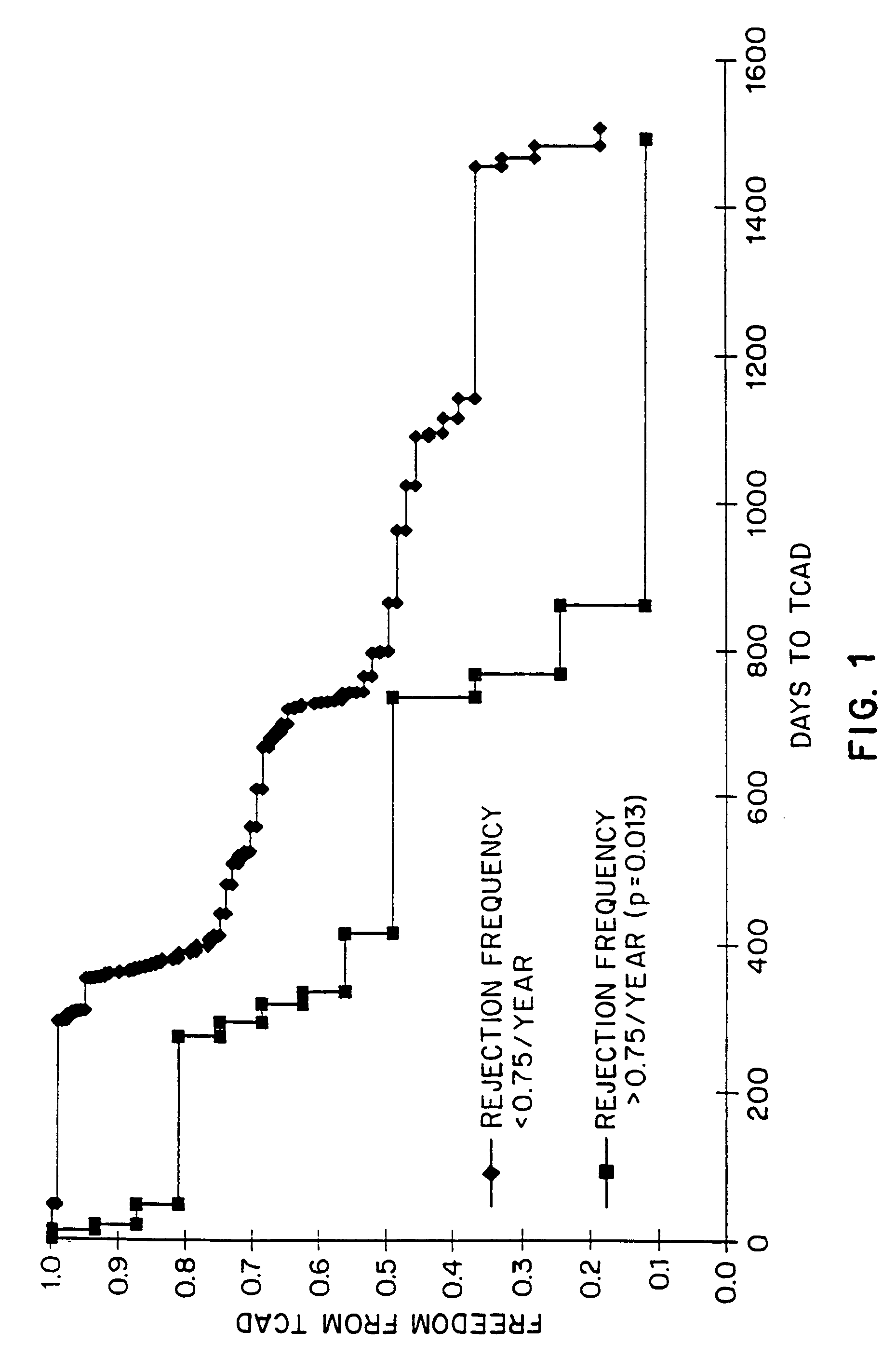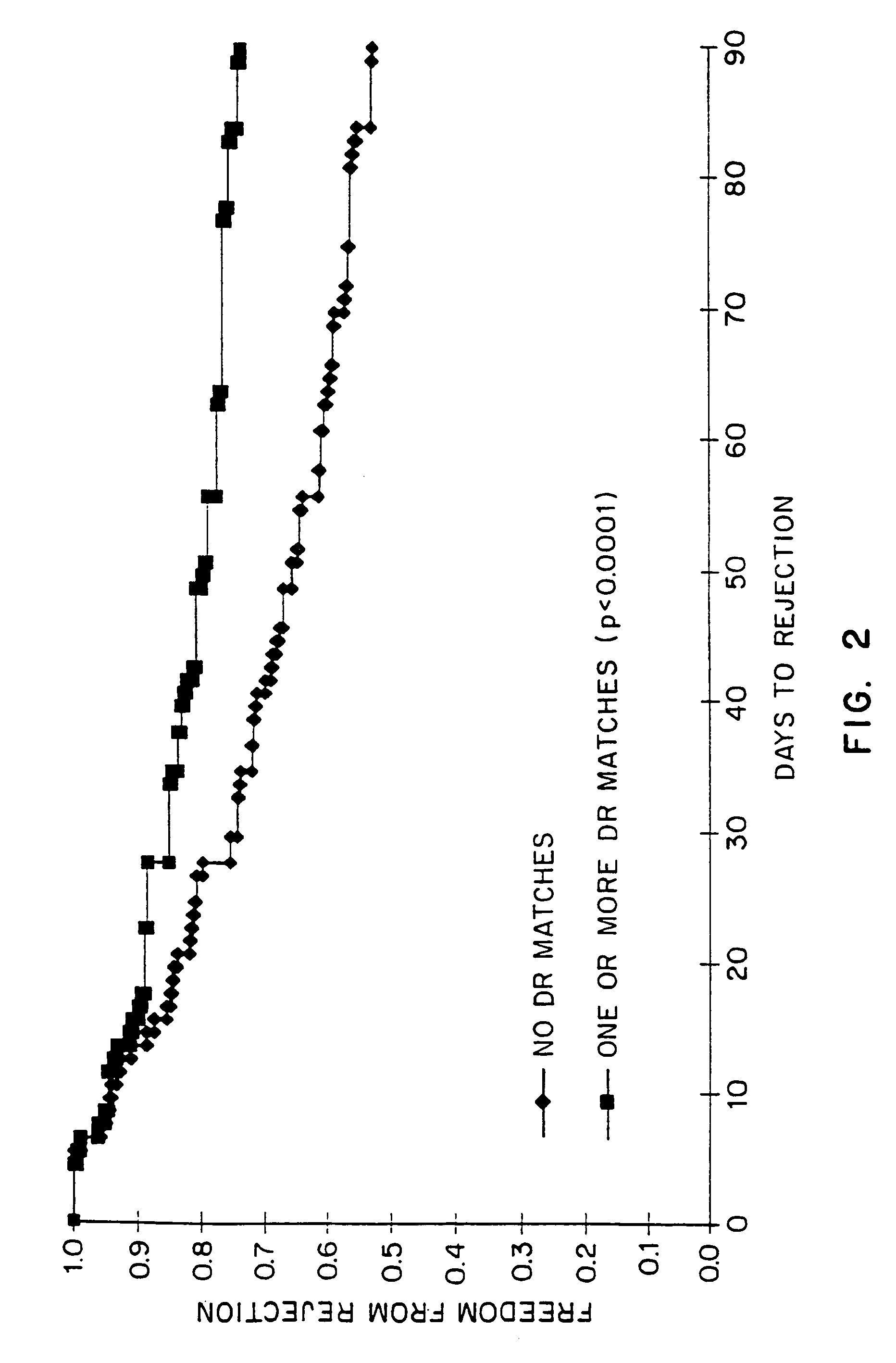Method for predicting transplant rejection
a transplant rejection and transplantation method technology, applied in the field of transplant rejection prediction, can solve the problems of high limited long-term success of cardiac transplantation, and associated high levels of pre-transplant pra in cardiac allograft recipients, so as to reduce the number of endomyocardial biopsies, reduce anti-donor alloreactivity, and reduce unnecessary diagnostic and therapeutic procedures
- Summary
- Abstract
- Description
- Claims
- Application Information
AI Technical Summary
Benefits of technology
Problems solved by technology
Method used
Image
Examples
Embodiment Construction
[0022]The present invention relates to a method for predicting whether or not a transplant recipient is likely to reject a tissue allograft wherein said method is based on results derived from three immunological assays. The three immunological assays include class II HLA-DR typing, a lymphocyte growth assay and IgG anti-MHC class II antibody measurement. The method of the invention may be used to predict the likelihood of rejection in patients receiving a variety of different tissue allografts including, but not limited to, cardiac, liver, lung, kidney or pancreatic transplants. The method of the invention may be used at any time following transplant, but preferably within the first 6–12 months following transplantation.
[0023]5.1. Immunological Assays
[0024]The present invention relates to the use of three immunological assays for predicting whether or not transplant recipients are likely to reject tissue allografts. The assays include an HLA assay to determine the presence or absen...
PUM
 Login to View More
Login to View More Abstract
Description
Claims
Application Information
 Login to View More
Login to View More - R&D
- Intellectual Property
- Life Sciences
- Materials
- Tech Scout
- Unparalleled Data Quality
- Higher Quality Content
- 60% Fewer Hallucinations
Browse by: Latest US Patents, China's latest patents, Technical Efficacy Thesaurus, Application Domain, Technology Topic, Popular Technical Reports.
© 2025 PatSnap. All rights reserved.Legal|Privacy policy|Modern Slavery Act Transparency Statement|Sitemap|About US| Contact US: help@patsnap.com



